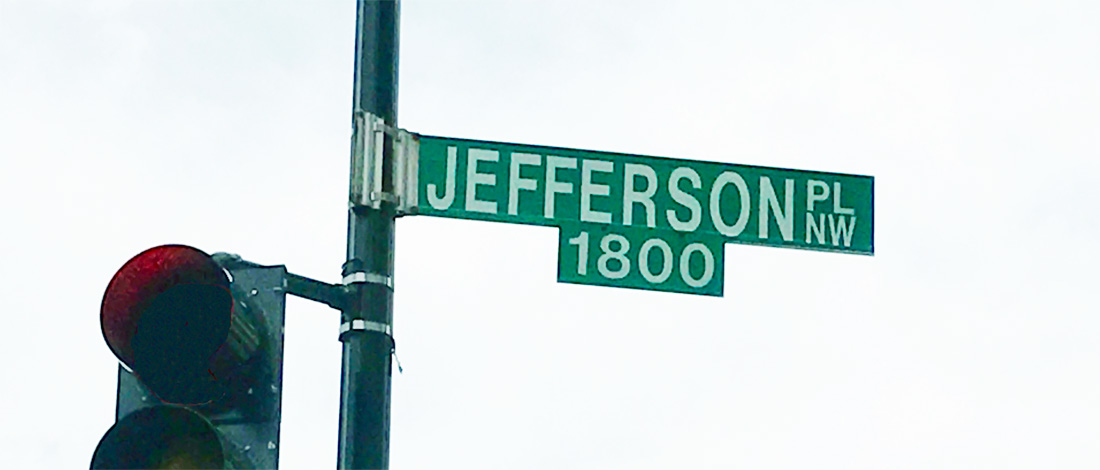An Introduction to Jefferson Place Gallery

The Jefferson Place Gallery is considered to be the first DC art gallery almost exclusively focused on representing and supporting the local avant garde artist community. Founded in 1957 by several faculty members from American University—William Calfee, Robert Gates, Helene McKinsey, Mary Orwen*, Ben Summerford—along with Alice Denney, who assumed the role of the gallery’s first director, the gallery would go on to represent and exhibit art works by more than 100 DC-area artists in its 18-year history, including Kenneth Noland, Gene Davis, Thomas Downing, Howard Mehring, Sam Gilliam, Willem de Looper, Shelia Isham, Eric Rudd, Rockne Krebs, John Gossage, and William Christenberry.
Although several notable names were represented by the gallery during its run, the importance of the gallery is not one of celebrity. It is one of community. Prior to the Jefferson Place, few galleries in Washington, DC supported the local community of artists.
Certainly there were opportunities to exhibit work. The Corcoran had an annual area exhibition, and a biennial that occasionally included area artists. The Corcoran and Phillips, along with American and Catholic Universities, might also give an area artist a solo exhibition, or include them in small group exhibitions. Some galleries might include area artists among national and international artists in the gallery’s calendar of exhibitions. There were societies of watercolorists, sculptors, and the like. And there were numerous frame shops, consignment shops, and coffee houses where artists could exhibit a painting or a sculpture. But with possible exception to the “societies,” few nurtured a community around avant garde approaches to art.
The Jefferson Place Gallery gave area artists a place to display the evolving shifts in Modernism, Abstraction, and Expressionism. It supported artists exploring new means of printmaking, and sculpture. If an artist wanted to rip a painting off the stretchers, or make a painting three-dimensional, the artist was supported. It was an early pioneer in DC for exhibiting photography, conceptual art, and laser art. It stirred controversy, elicited guffaws, and inspired other artists. It provided a venue for dialog between artists, and with the community. By its sudden decline in the fall of 1974, it was the established giant that competed with several contemporary galleries with strong rosters of area talent. But, at its beginning in 1957, it was a stand-alone outfit, that slowly made the scene.
This website is an effort to collect and archive the work of the Jefferson Place. It is also an opportunity to reexamine the importance of the gallery and its artists, provide historical context of the developing Washington, DC fine arts scene, and to curate some virtual exhibitions of the many artists who exhibited at the gallery.
*Mary Orwen taught at AU briefly in the early 1950s, and was included in several exhibitions throughout the decade.